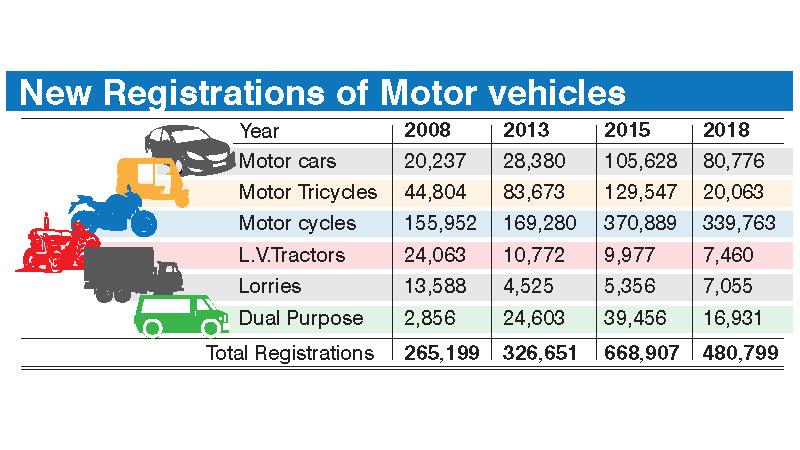
The e-motoring system to simplify vehicle registrations and minimise fraud, which has been in the pipeline for the past decade is expected to be launched this year, Commissioner General of Motor Traffic, Jagath Chandrasiri said. “The system is by far foolproof, hassle free and requires just a single visit to the Registrar of Motor Vehicles (RMV) to produce original documents and submit biometrics of the vehicle owner,” he said.
Once the e-motoring system is launched all vehicle registrations will be done online. The system will connect vehicle owners, insurance companies, leasing companies and related state departments such as the Customs and Import and Export Agents online so that a lot of red tape and bureaucracy can be done away with, making the visit to the RMV a pleasant experience.
Information and Communication Technology Commissioner, Thushara Suraweera said this system will ease the registration process and cut down on delays currently experienced by service seekers from the RMV. The heavy workload is presently handled manually. “Once the system is in place, all vehicles released from any sea port will be photographed, chassis numbers recorded and a Vehicle Identity Card (VIC) sticker issued, leaving little room for any foul play.
The buyers can know for certain if a vehicle has been imported through the legal channel and released from the Customs in the proper way. The system enables us to maintain all details of the vehicle until it is taken on to the road,” Suraweera said.
The VIC will have the details of all payments made for a vehicle and modifications made, for instance, after an accident, leaving little room to sell a vehicle fraudulently to an unsuspecting buyer under false pretexts. Since all public and private agencies are inter connected, the system is expected to offer a smooth and foolproof process of new registrations as well as when buying a new vehicle in the future.
Currently the RMV is a breeding ground for touts offering various shortcuts to register vehicles and transfers. Sometimes, the registration documents get lost in the mail. However, the RMV is not expected to put into the system all the old data, manually documented and stored with it. Instead it will go with a five year plan, acquiring into the system only the vital data to make its services more efficient to the public.
RMV officials said that at the beginning of the launch they expect some resistance from stakeholders as they will have to adapt to a new and an unfamiliar system but it is determined to implement the system in July as planned. 480,799 vehicles were registered at the RMV in 2018, with the highest number 46,727 recorded in May and the lowest registered 30,970 in December.
Last year there were 340,000 motor cycle registrations, which accounted for the most number of registrations that year. Motor cars came second with 80,000 registrations followed by 18,800 threewheelers. With the current modernisation program, the Department is gearing to keep up with the soaring demand for its services in the future.
According to the data with the RMV, the number of registered motor vehicles in the country doubled in the past decade. It surpassed the 7.72 million mark by 2018. In 2008 the vehicle population in Sri Lanka stood at 3.39 million, motor cycles accounting for more than half of this figure in 2008 and 2018.
